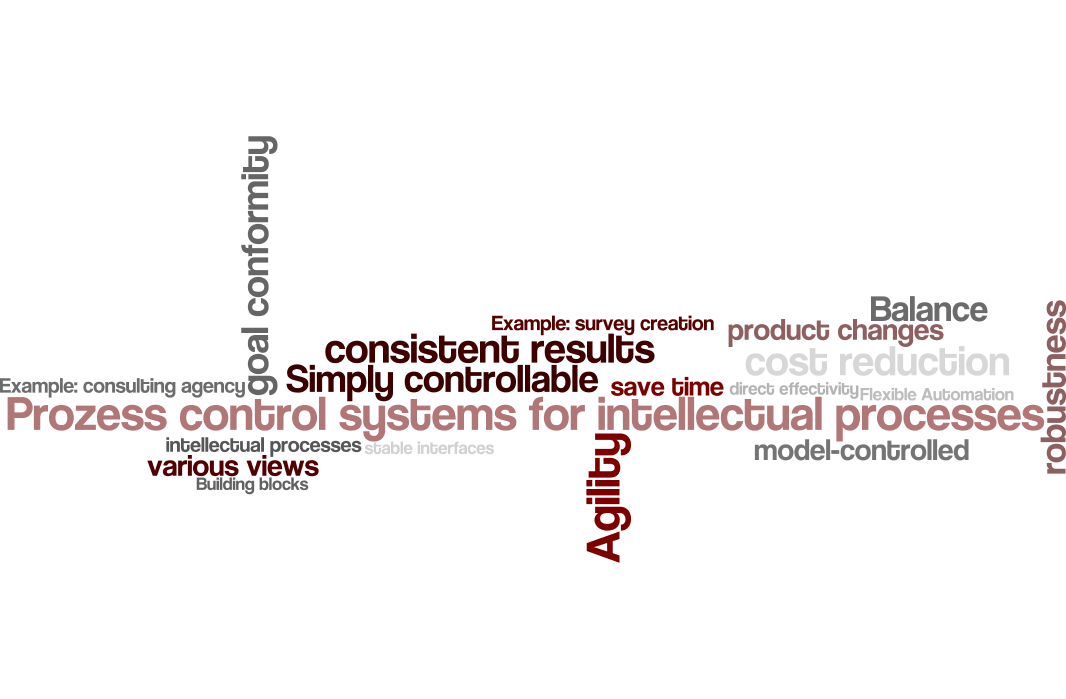Time, costs, robustness, agility, balance: model-controled IT solutions are powerful allies .
The underlying idea is quite simple: IT applications get control information and building blocks at runtime from the domain meta model , which is a global model of the enterprise's overall process. Therefore, changes in the model have immediate and direct impact.


